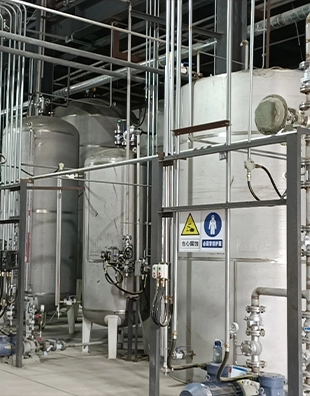coagulation flocculation
Coagulation and Flocculation A Vital Process in Water Treatment
Water is an essential resource for all forms of life on Earth. However, the increasing demands for clean water due to urbanization, industrialization, and agricultural practices have made water treatment processes more crucial than ever. Among these processes, coagulation and flocculation play a significant role in purifying water, removing contaminants, and ensuring a safer drinking water supply.
Understanding Coagulation and Flocculation
Coagulation and flocculation are two interconnected physical-chemical processes that treat water by removing suspended solids and impurities. Coagulation is the initial step, where chemical coagulants, such as aluminum sulfate or ferric chloride, are added to water. These coagulants destabilize the suspended particles, allowing them to gather together and form larger aggregates known as flocs. This process typically occurs rapidly and is facilitated through rapid mixing, which allows the coagulant to interact with the suspended particles effectively.
Following coagulation is flocculation, which involves gentle mixing to encourage the formation of larger flocs from the smaller aggregates created during coagulation. The goal of flocculation is to create larger settleable flocs that can easily be removed from the water. This phase is crucial as the size of the flocs determines their ability to settle down in the sedimentation tank later in the treatment process.
Importance in Water Treatment
Coagulation and flocculation are pivotal for treating various types of water, including surface water, groundwater, and even wastewater. The effectiveness of these processes directly influences the overall quality of the treated water. The removal of turbidity, pathogens, and other harmful contaminants not only improves aesthetic qualities such as color and odor but also enhances the safety of the water.
coagulation flocculation

In municipal water treatment plants, coagulation and flocculation are often followed by sedimentation and filtration stages. Sedimentation allows the flocs to settle at the bottom of a tank, where they can be removed. Filtration further polishes the water by eliminating remaining particles that may have escaped the coagulation and flocculation stages. This multi-step approach ensures that the water meets the strict standards set for drinking water quality.
Challenges and Innovations
While coagulation and flocculation are effective, there are challenges associated with their implementation. Factors such as water temperature, pH, and the presence of organic matter can significantly influence the performance of coagulants. Moreover, the generation of sludge from the flocs removal process poses disposal challenges for treatment facilities.
In response to these challenges, researchers are exploring alternative coagulants and innovative techniques to enhance coagulation and flocculation processes. Natural coagulants, such as plant extracts, are gaining attention for their eco-friendly properties and effectiveness in treating water. Additionally, advancements in technology, such as the use of micro and nanobubbles, have shown promise in improving floc formation and separation.
Conclusion
Coagulation and flocculation are fundamental processes in water treatment that contribute significantly to producing clean and safe drinking water. As water scarcity and pollution become more pressing global issues, optimizing these processes will be critical. Continuous research and advancements in this field will ensure that water treatment facilities can meet the growing demand for clean water while minimizing environmental impacts. The importance of understanding and improving coagulation and flocculation processes cannot be overstated—it is a cornerstone of public health and sustainable water management.
-
Understanding Polycarboxylic Acids: Properties, Applications, and Future PotentialNewsJul.28,2025
-
Scale Inhibitor Explained: How to Protect Your System from Limescale and Hard Water DamageNewsJul.28,2025
-
Scale and Corrosion Inhibitors: Essential Chemicals for Industrial Water System ProtectionNewsJul.28,2025
-
Polyaspartic Acid: A Biodegradable Polymer for Sustainable ChemistryNewsJul.28,2025
-
Isothiazolinones: A Versatile Antimicrobial Class with Industrial Power and Regulatory ChallengesNewsJul.28,2025
-
A Deep Dive into 2-Phosphonobutane-1,2,4-Tricarboxylic Acid (PBTC)NewsJul.28,2025





